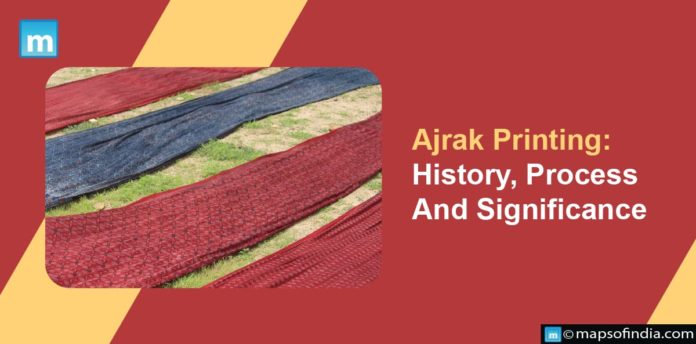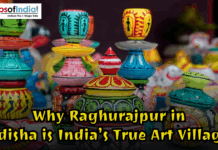Ajrak printing is a traditional block printing technique that developed in Pakistan’s Sindh region and flourished in India’s Kutch region. It is one of the oldest printing techniques still in use today, with detailed designs and brilliant colors. Ajrak printing is a time-consuming procedure that entails up to 16 processes, all completed by hand.
The History of Ajrak Printing
Ajrak printing has a centuries-long history traced back to the Indus Valley Civilization. The name “Ajrak” is derived from the Arabic word “Azrak,” which means blue, owing to the prominence of the blue color in Ajrak prints. The art form is firmly embedded in the cultural past of Gujarat and Sindh, both of which have a rich textile craft legacy.
The Ajrak Printing Process
The process involves multiple stages, each requiring the skilled hands of artisans who have honed their craft over generations.
-
Fabric Selection
Ajrak printing is usually done on natural materials such as cotton and silk. The fabric is freshly washed and is prepared to receive the dyes.
-
Designing
The elaborate Ajrak motifs are carved on hardwood blocks known as ‘bunta.’ These wooden blocks are meticulously hand-carved, and the designs can be extremely elaborate. These blocks are the heart of Ajrak printing, and they decide how the fabric will look.
-
Dye Preparation
The essence of Ajrak printing is the use of natural dyes. The colors are derived from natural sources such as indigo, pomegranate rind, and madder root. Each dye necessitates a unique preparation process, and the artisans employ time-honored methods to produce a wide range of colors.
-
Printing
After making the dyes, the artists stamp the fabric with the desired design using wooden blocks. This technique is methodically repeated to form the overall pattern. It’s worth mentioning that Ajrak prints are often reversible, which means that the detailed designs are present on both sides of the fabric.
-
Resist Printing
The resist printing technique is one of the distinguishing elements of Ajrak printing. The fabric is first printed with a resist paste, a barrier against dye penetration. This enables the production of elaborate, multidimensional designs in various hues.
-
Dyeing
The cloth is colored in stages after resist printing, beginning with the lightest color and increasing to the darkest. The fabric is frequently sun-dried between dyeing stages. This time-consuming process can take many weeks to finish.
-
Washing and Finishing
The fabric is washed thoroughly to remove any remaining color and resist paste. The bright colors of the Ajrak print are revealed after the final wash. After drying, the fabric is ready for further finishing treatments.
-
Finishing Touches
The final cloth may receive extra embellishments or embroidery depending on the intended usage. It is then cut and sewn into clothing, home textiles, or other items.
The Significance of Ajrak Printing
Ajrak prints are an important element of the cultural identity of Gujarat’s Kutch region. They are proudly worn during traditional events such as weddings and festivals. Ajrak prints have transcended regional borders and acquired an international reputation. They are a symbol of India’s rich textile legacy and continue to have an impact on modern fashion around the world.
Conclusion
Ajrak printing is a testament to traditional art forms’ resilience and cultural heritage’s power. Its intricate designs, natural dyes, and timeless appeal have captivated the world, making it an emblem of India’s rich textile heritage. The artistry of Ajrak printing serves as a bridge between the past and the future, a reminder that tradition can be enduring and relevant in the modern world.




